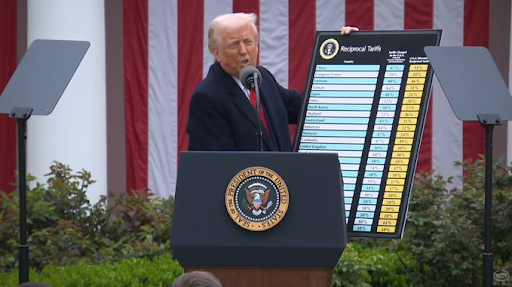Morning Minute is a daily newsletter written by Tyler Warner. The analysis and opinions expressed are his own and do not necessarily reflect those of Decrypt. Subscribe to the Morning Minute on Substack.
GM!
Today’s top news:
- Crypto majors dip 3-6% overnight; BTC holds at $115,000
- Gemini files to go public with ticker GEMI, timing TBD
- BTCS becomes first TreasuryCo to issue a ‘Bividend’, offers blockchain dividend
- Adam Back’s Bitcoin Standard TreasuryCo to launch with 30k BTC + $1.5B
- LIGHT eco rallies over the weekend, latest launchpad challenger to Pump
🏦 Wall Street Loads Up on Bitcoin via ETFs
Some of the biggest players in the world are piling billions into BTC funds.
Yet the average professional fund manager is barely allocated. What gives?
📌 What Happened
Wall Street and global institutions dramatically increased their Bitcoin exposure in Q2, pouring billions into spot ETFs like BlackRock’s (IBIT) and related crypto equities.
SEC filings reveal that heavyweights like Brevan Howard, Goldman Sachs, Harvard, Wells Fargo, Jane Street, and even Norway’s sovereign wealth fund all boosted their positions, signaling growing comfort with BTC as a core allocation.
Some of the most notable moves:
- Brevan Howard nearly doubled its IBIT stake to 37.9M shares worth $2.6B, making it one of the largest institutional holders.
- Goldman Sachs reported $3.3B across IBIT and Fidelity’s Wise Origin Bitcoin Trust (FBTC), plus $489M in Ethereum’s ETHA trust.
- Harvard disclosed a $1.9B stake in IBIT, while Abu Dhabi’s Mubadala continues to hold $681M.
- Wells Fargo quadrupled IBIT holdings to $160M, alongside a small GBTC stake.
- Cantor Fitzgerald pushed past $250M in IBIT while adding exposure to Strategy (MSTR), Coinbase (COIN), and Robinhood (HOOD).
- Trading giant Jane Street now owns $1.46B of IBIT, making it its largest position after Tesla.
- Norway’s $2T sovereign wealth fund indirectly holds 7,161 BTC (~$841M) via equity stakes in MSTR, Coinbase, Block, and others – up 192% YoY.
Yet, the average professional fund manager in the US is barely allocated.
A survey from Bank of America showed that the average fund manager has just 0.3% allocated to crypto.
And a whopping 75% have 0 exposure.
🗣️ Why It Matters
It’s a tale of two groups.
Institutions are clearly piling into BTC and crypto right now, including the biggest names in finance, academia, and even nation-states.
The sheer scale of these positions ($2B+ for Brevan Howard, $3B+ for Goldman, $1.9B for Harvard) validates Bitcoin as an institutional-grade asset.
And it’s becoming clearer that spot ETFs are proving to be the gateway, offering clean, regulated exposure through familiar structures.
Yet, retail is sleeping, and their fund managers aren’t helping.
The fact that 75% of fund managers aren’t allocated at all is not surprising but is also staggering at the same time.
But the good news is – they are coming.
The more that the big names and institutions pile in, the “safer” it becomes for the average fund manager to recommend crypto as an investment.
It’s a lot easier to make safe, standard and consensus plays and collect fees than it is to go out on a limb and make contrarian, conviction calls.
Crypto won’t be contrarian much longer.
And the fund manager pivot is just a matter of time…
🌎 Macro Crypto and Memes
A few Crypto and Web3 headlines that caught my eye:
- Crypto majors were red on the day; BTC -3% at $115,100, ETH -6% at $4,260, XRP -5% at $2.97, SOL -7% at $181
- XMR (+4%) led top movers
- Odds of a September rate cut have fallen from 99% to 83% after recent inflation data
- The ETH ETFs saw new outflows on Friday, after a massive 8-session green streak that resulted in $3.7B in net inflows
- The Federal Reserve officially ended its “novel activities” program that increased bank scrutiny of crypto
- SEC Chair Paul Atkins announced the agency is developing new custody regulations for digital assets to increase clarity and security in the U.S. crypto markets
- A recent survey showed professional fund managers allocate just 0.3% to crypto on average, and 75% have 0 exposure
- Gemini filed to go public via Nasdaq with ticker GEMI, timing still TBD
- Grayscale filed for a Dogecoin ETF on Friday
- New York Assemblymember Phil Steck proposed a 0.2% excise tax on crypto transactions, estimating $158 M in annual revenue from the program
In Corporate Treasuries
- SBET stock plunged 15% to $19.85 on Friday following a Q2 net loss of $103 M; the firm attributed losses to a $87.8M non‑cash impairment and $16.4M in stock‑based compensation
- Metaplanet bought another 775 BTC for $93M, now holds 18,888
- Adam Back’s Bitcoin Standard TreasuryCo is preparing to go public in a merger with Cantor Equity Partners, aiming to launch with 30,000 BTC + $1.5B in capital
- BTCS announced it will issue a one-time blockchain dividend, ‘Bividend,’ of $0.05 per share in ETH, the first of its kind
In Memes
- Memecoin leaders are very red on the day; DOGE -5%, Shiba -5%, PEPE -5%, PENGU -6%, BONK -8%, TRUMP -2%, SPX -9%, and FARTCOIN -5%
- FORK was a top onchain runner, jumping 25x to $4.3M; NEET +36% to $13M was a notable mover
- LIGHT ran 4x to $160M over the weekend after the team spent over $1.4M buying back and burning its token thanks to its flywheel (now $126M)
💰 Token, Airdrop & Protocol Tracker
Here’s a rundown of major token, protocol and airdrop news from the day:
- Polymarket introduced a ‘Breaking News’ tab, showing the top moving markets over the past 24 hours
- Pump.fun flipped Hyperliquid in revenue on Sunday, though it still lagged on the week and month (Hype re-flipped it over the past 24 hours)
- Story Protocol founder Jason Zhao resigned over the weekend, 3.5 years after starting Story (and $130M+ in funding later)
🤖 AI x Crypto
Section dedicated to headlines in the AI sector of crypto:
- Overall market cap down 3% to $12.9B, leaders were red
- FARTCOIN (-6%), VIRTUAL (-3%), TIBBIR (-8%), ai16z (-5%) & VVV (+9%)
- VIRGEN (+84%), AVB (+17%) and CLANKER (+15%) led top movers
🚚 What is happening in NFTs?
Here is the list of other notable headlines from the day in NFTs:
- ETH NFT leaders were red alongside the ETH selloff; Punks -1% at 49 ETH, Pudgy -3% at 12.8, BAYC -3% at 11.3 ETH
- 0n1 Force (+29%) and Yumemono (+60%) were notable top movers
- Bitcoin NFTs saw some green, led by Taproot Wizards (+4%) and Adderrels (+28%)
- Abstract NFTs were mostly red, led by Pengztracted (+29%)
- A Rektguy 1/1 sold for 10 ETH ($45,000)
- Cerebro announced its mint details, launching on 8/21 with 6,969 NFTs for 0.08 ETH each
Daily Debrief Newsletter
Start every day with the top news stories right now, plus original features, a podcast, videos and more.










